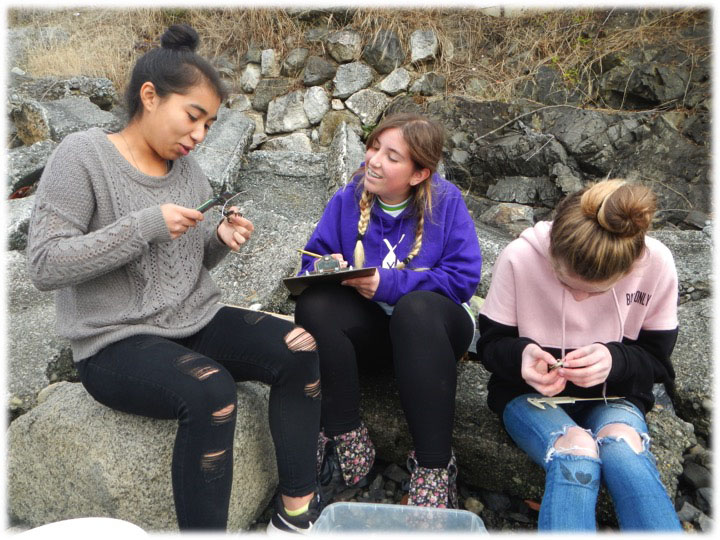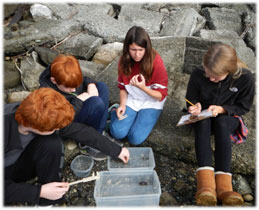
Middle School Projects
Projects at the middle school level vary from piecing together the skeleton of a gray whale to student investigations into nearshore ecosystems and the organisms that inhabit them.
Grade 6 - Soft Sediment and Rocky Shore Ecosystem Surveys: To prepare students for field surveys FHLSOP invites Marine Biology students at FHL and scientists to participate in "Expert Day" where they share their expertise on marine organisms. When in the field, students survey and contrast rocky versus soft sediment intertidal habitats. While in the soft sediment ecosystem, students work with FHL scientists to dig and sieve sediment samples, identifying organisms from the low and high tide zones. At the rocky shore students identify and count the animals within a quadrat at three different tidal heights with the help of FHL scientists. For both habitats the students complete a scavenger hunt worksheet that includes questions, observations, descriptions and drawings. |
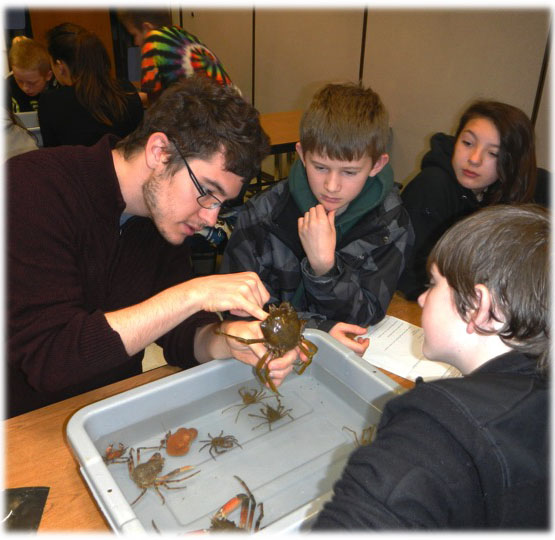 |
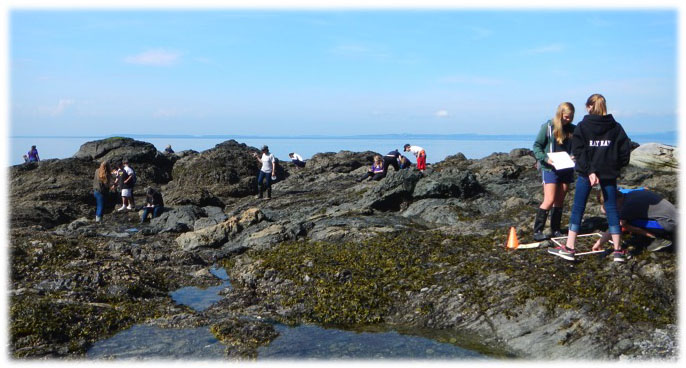  | 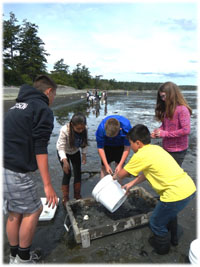 |
Grade 7 - DNA Extraction Lab and Gray Whale Project: In conjunction with the 7th grade human body curriculum, FHLSOP designed a set of complimentary activities. In the first activity, students extract DNA from their own cheek cells, helping them gain a greater understanding of cell components and the structure of DNA. In the second activity, students take part in the San Juan Island Whale Museum's Gray Whale Project, where they assemble a real gray whale skeleton. They engage in a discussion about the forms and functions of skeletons and try to solve the mystery of the whale's death. |
 |
Grade 7-Whale Adventure Days: FHLSOP staff teams up with FHMS teachers and The Whale Museum staff to create informative and intriguing activities so students will be savvy investigators as they embark on their annual whalewatching trip the following day. The Whale Adventure Day consists of a full day of interactive activities learning about island bio-geography, orca foraging behavior, orca identification and meeting the Conservation Canine (CK9) Orca Research Team. Meeting a CK9 dog, learning about their job and seeing Max the dog in action is a highlight of the day |
 |
Spring Street International School Grade 7 Grade Science - Watershed Studies with Stream Surveys, Water Quality Testing and Benthic Macroinvertebrate Stream Sampling, Sorting & Identifying: In the fall students conduct stream surveys at sites in both the False Bay and Beaverton Vallley Watersheds on San Juan Island. This starts in the classroom with a project overview and introduction to the importance of the watershed functions. Then in the field at both of the watersheds physical, biological, and geological characteristics are surveyed along with drawing sampling site illustrations. These activities are in preparation for more extensive sampling that occur in the winter and spring to determine the overall health of these watersheds/streams. In the winter data is collected on the biological variable - Fecal coliform counts and the physical variables - temperature, turbidity, dissolved oxygen, and pH at the above watershed sites. Using this data, the watersheds'health is classified as extraordinary, excellent, good, fair or below standards according to the Washington State Department of Ecology's quality assurance standards (2002). In the spring one of the biological variables used as an indicator of watershed/stream health are the benthic macroinvertebrates (mostly insects, worms, snails, and spiders). To understand their ecological importance, students learn about the Benthic MacroInvertebrate's (BMI's) taxonomy, morphology, their functional roles and feeding types. In the field, students put on chest waders so they can enter the water to use kick-nets and sieve trays to collect BMI's at both False Bay Creek and Beaverton Valley Stream. Students then use this community of organisms (BMIs) to determing the water quality of the watersheds/streams. They do this by using Functional Feeding Groups and Pollution Tolerance Indexes to analyze their results. |
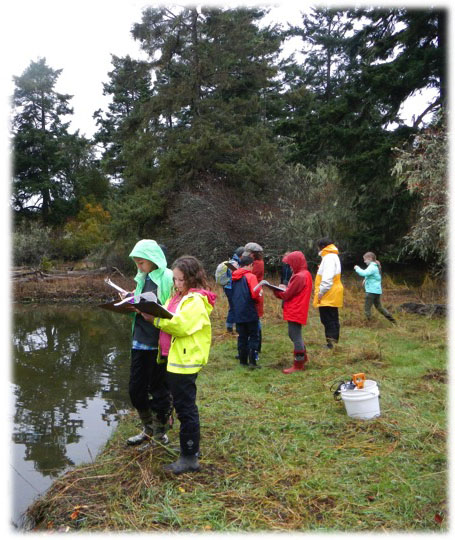 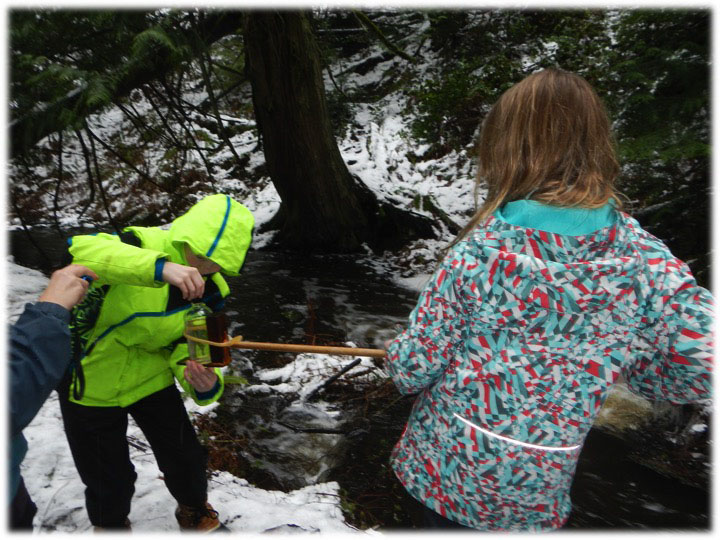 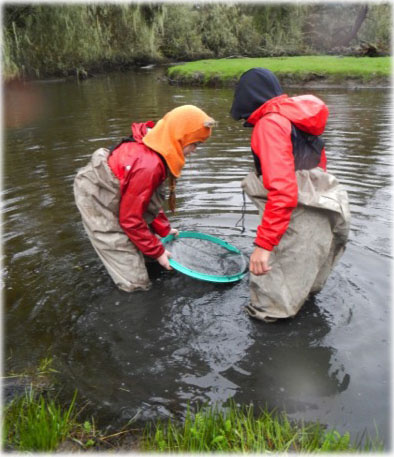 |
Grade 8 - Student Designed Marine Biology Inquiry Projects: The project begins with an in depth review of local marine invertebrates in the classroom. Students then focus on a particular set of organisms and design and perform an in-class inquiry experiment to prepare them for field projects. In the field, small groups of students participate in 1 of 3 projects that compare marine invertebrate distribution patterns, species diversity and/or species abundance in nearshore marine habitats. Students gather and analyze data to produce a concluding marine biology unit report. |
 |
|
 |
Spring Street International School 8th Grade Science - Know the Kelps and Algae: Students are introduced to the immense variety of kelp and algae found on docks, rocky shores and soft sediment ecosystems in the surrounding waters of San Juan Island. Students learn to identify red, green & brown algae species, make algae herbarium specimens and sample foods and products made with seaweed. |
 |

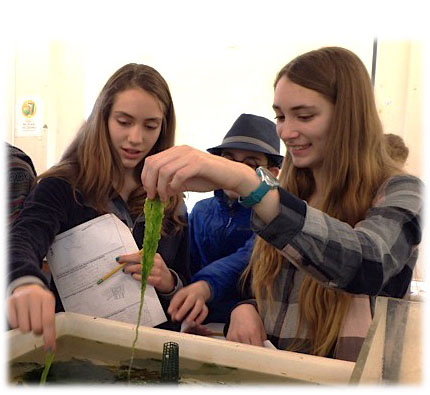
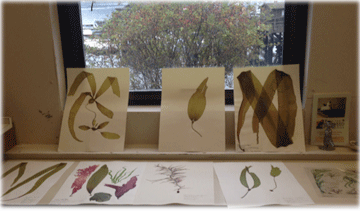 Check out the projects we are doing at the Elementary
School level and High
School level.
Check out the projects we are doing at the Elementary
School level and High
School level.
See photo gallery![]()
